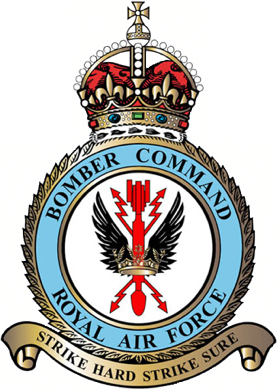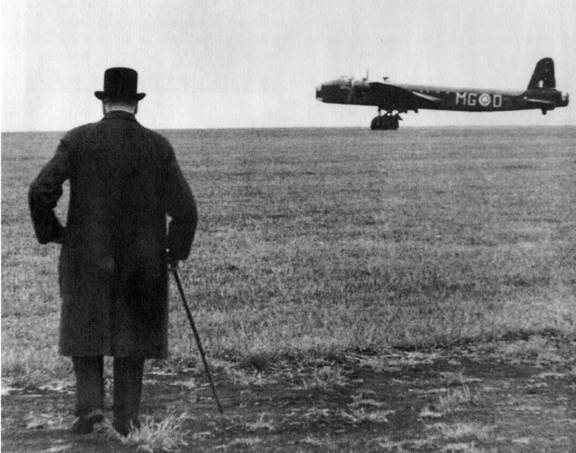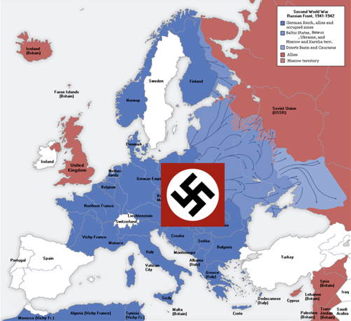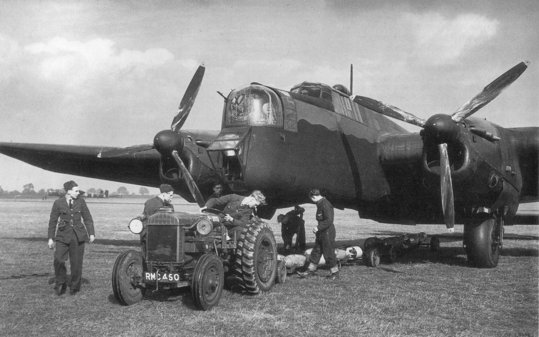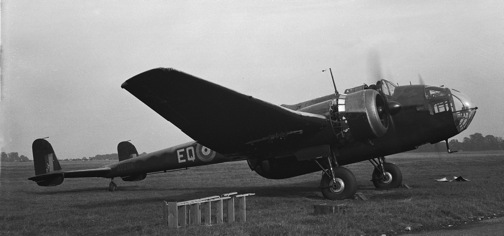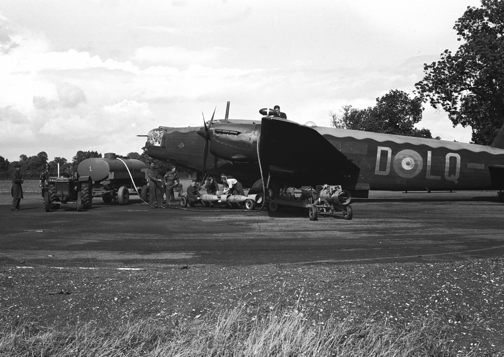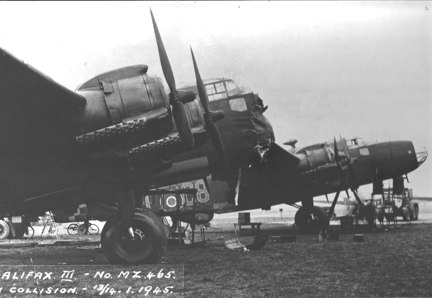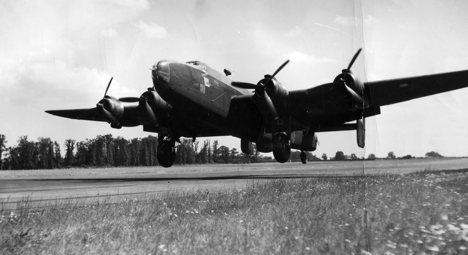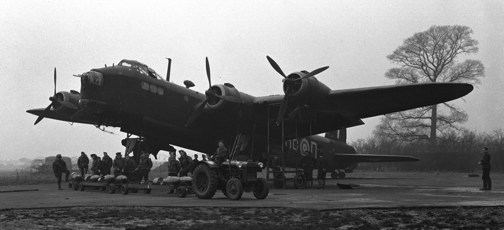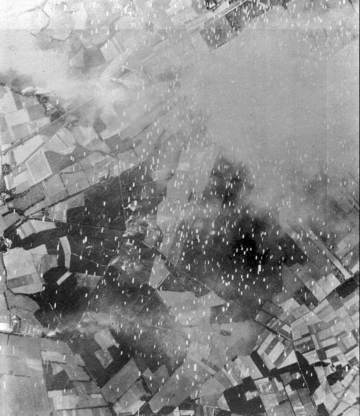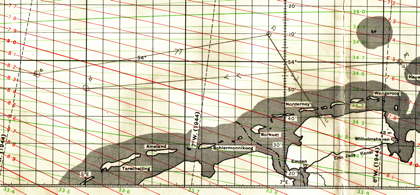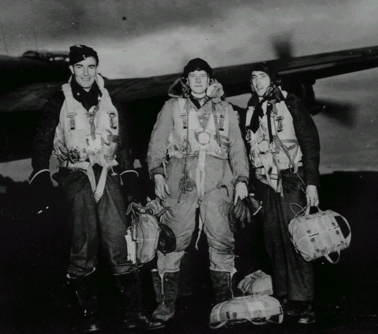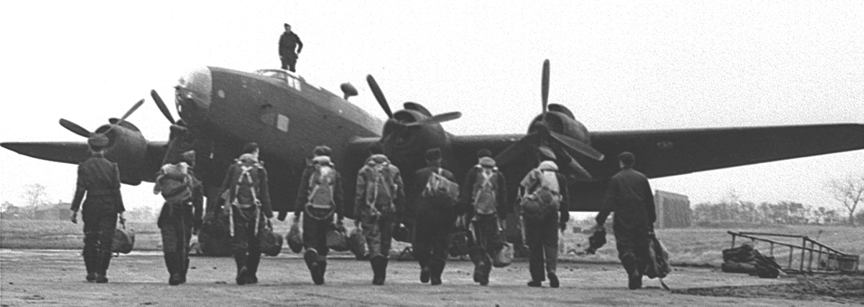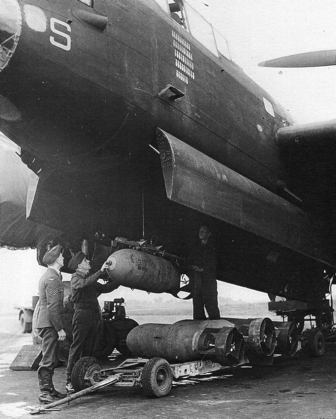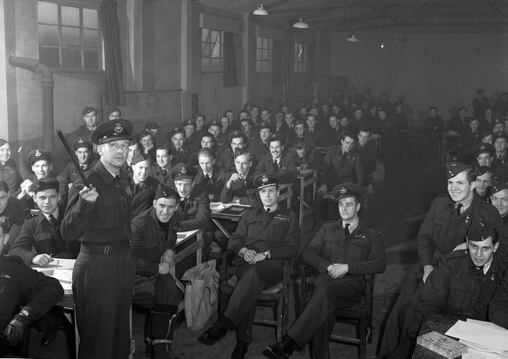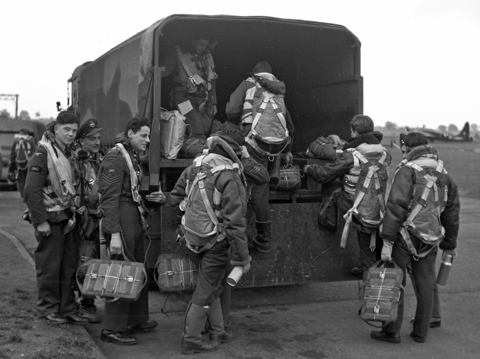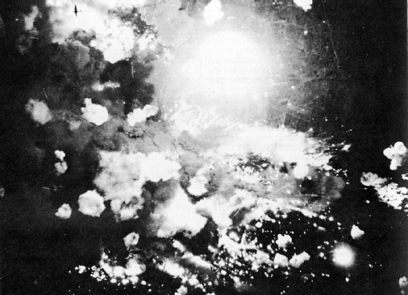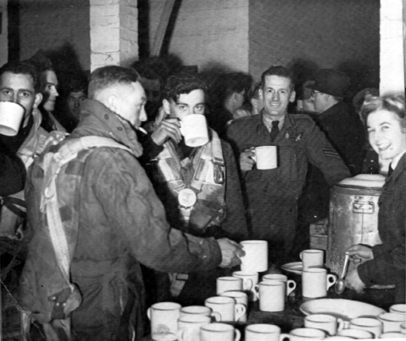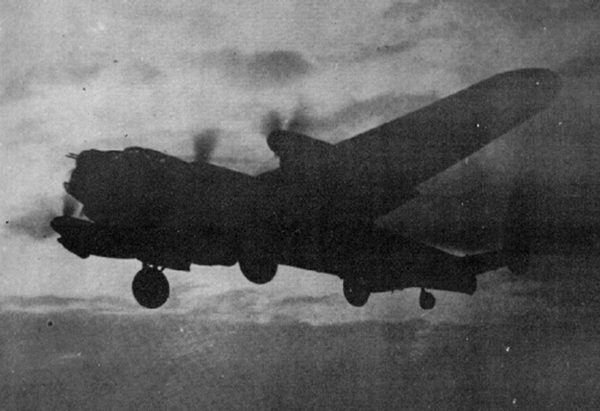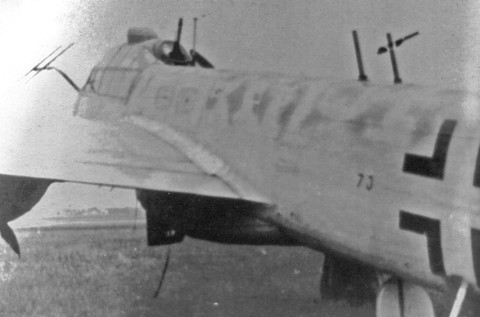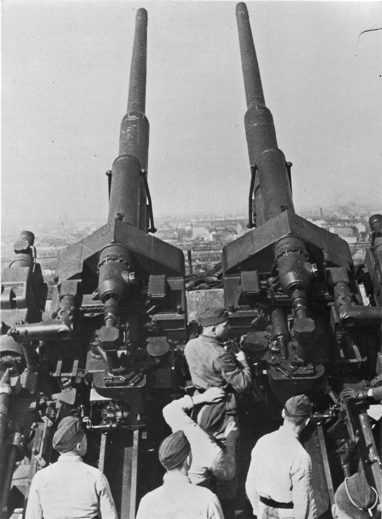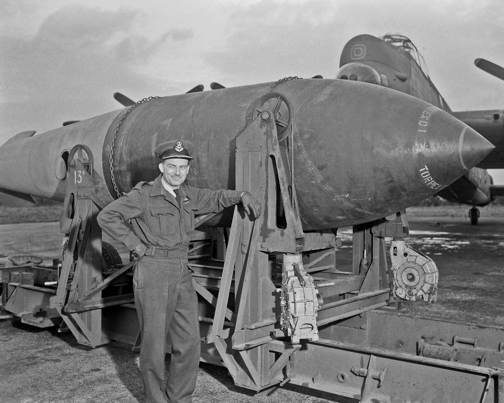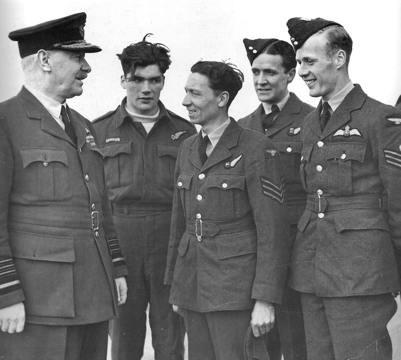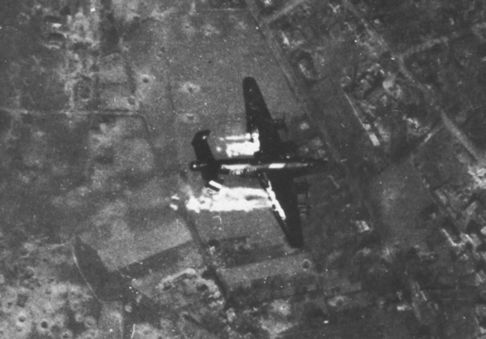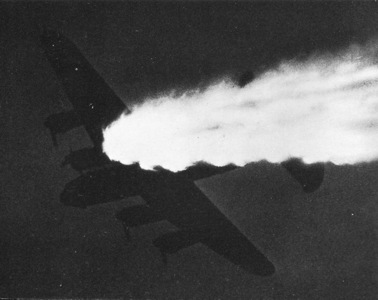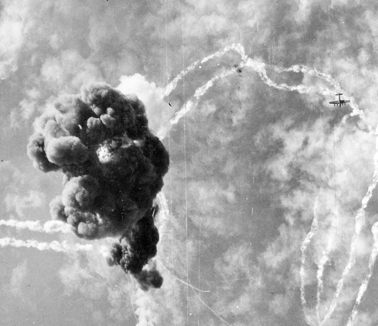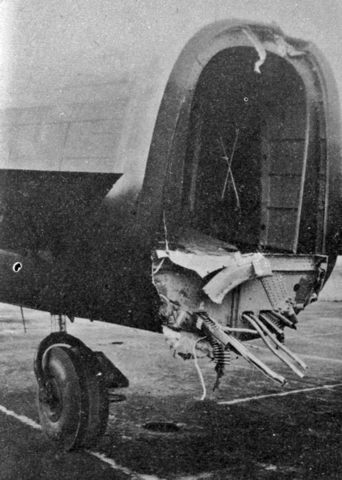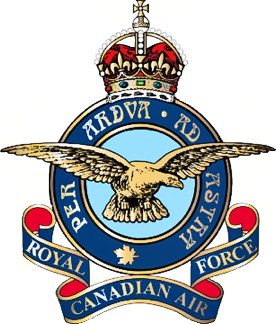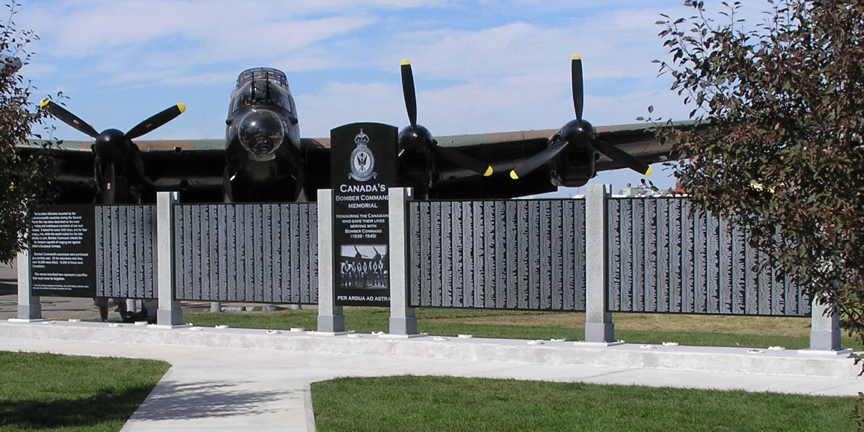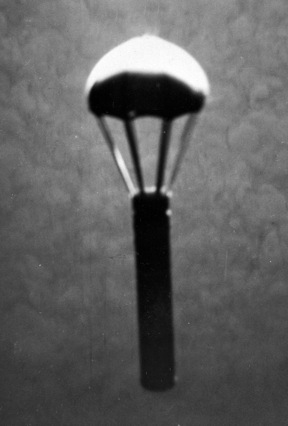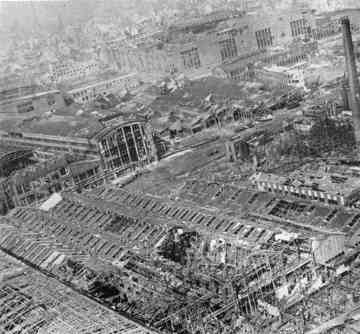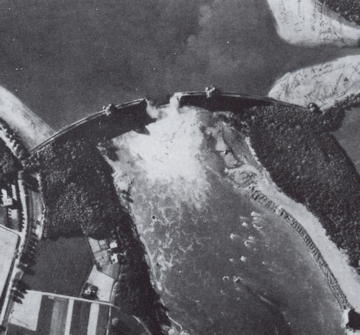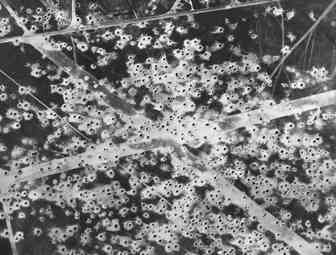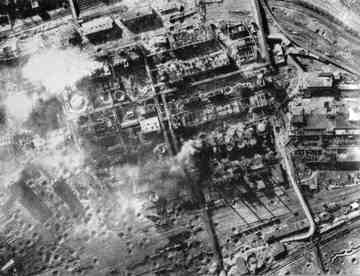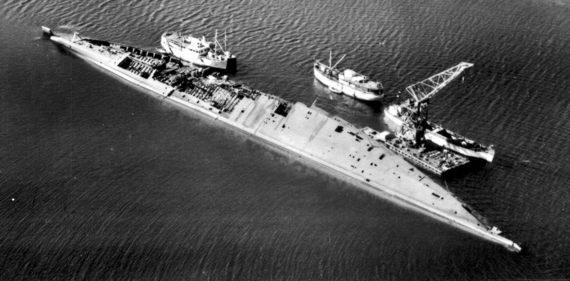Aircrew
- All Bomber Command aircrew were volunteers. Most were in their late teens or early twenties.
- Their lives were a unique mixture of danger and normality, at one moment on a terrifying bombing raid, a few hours later safely home at the pub.
Crewing Up and Operational Training
- Pilots, wireless (radio) operators, navigators, bomb aimers, and air gunners were brought together in a large room and told to organize themselves into crews.
The Bond
- Based on mutual trust, dependence, and shared experiences -both terrifying ones in the air and enjoyable ones while off duty, the bond between members of a bomber crew was very strong.
|
"With few exceptions, bomber crews were extraordinarily tight-knit groups, their members' lives enmeshed on the ground just as they were in the air. Seven strangers became united in a common endeavour; countless close friendships born on some windy British airfield have lasted a lifetime."
-Spencer Dunmore
|
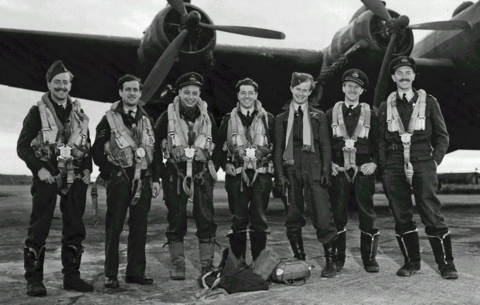
|
"You were seven men brought together by conflict and you came to know each other's every mood and reaction, ability, and humility, likes and dislikes during your training and operational life together . . . Your crew -seven men who not only flew together but ate, drank, slept, and played together . . . You were "one" and generally inseparable; rank meant little between you, yet you knew the dividing lines between respect, authority, and familiarity."
-F/Lt. Eddie Tickler
|
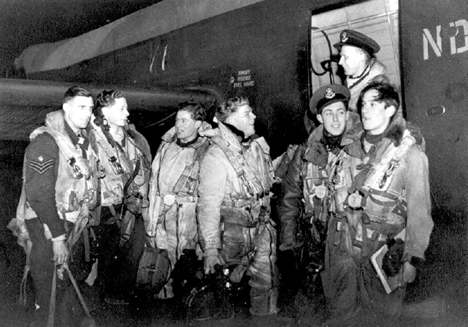
This crew has just returned from their thirtieth operation,
including nine trips to the most dangerous target of all, Berlin.
They are elated as their tour of operations is over
and they have beaten the odds. Five of the crew went on
to serve a second tour together.
This particular aircraft was lost the following night
after an operational life of only nine days.
|
 Bomber Command
Bomber Command  |
Aircrew Chronicles
|
Aircrew Losses
|
Nose Art
|
BCATP
|
Lancaster
|
Media
|
Aircrew Chronicles
|
Aircrew Losses
|
Nose Art
|
BCATP
|
Lancaster
|
Media
 Bomber Command
Bomber Command  |
Aircrew Chronicles
|
Aircrew Losses
|
Nose Art
|
BCATP
|
Lancaster
|
Media
|
Aircrew Chronicles
|
Aircrew Losses
|
Nose Art
|
BCATP
|
Lancaster
|
Media
